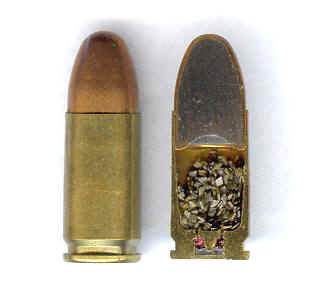
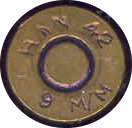
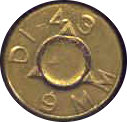
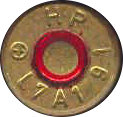
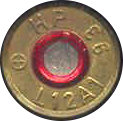
Ball mk I + sectioned version; headstamps; H^N 42 9m/m, DI 43 9mm (Canada), HP L7A1 91, HP L12A1 93 (both contract from Austria)
The 9mm para:
With the adoption of the Lanchester sub- machine gun in 1940 the United Kingdom started to produce the 9mmx19 cartridge. This 9mm round has been in service for over 40 years now. During these years there are a lot of different types and versions developed and approved for service.
Here are some examples of 9mm cartridges used by the British army.
Ball:




Ball mk I + sectioned version; headstamps; H^N 42 9m/m, DI 43 9mm (Canada), HP L7A1 91, HP L12A1 93 (both contract from Austria)
Tracer:
In 1944 a tracer round was developed, the G mk I, but was never issued in large numbers to the Brittish troops. In the '60s Kynoch produced a batch of tracer rounds but they failed to interest the Army to adopt this round.
Tracer; K61 9mm 2z
Proof:
To proof the 9mm sub- machine guns and pistols a proof round was approved for service, the Q mk I(z). The proof round was copperwashed and had a yellow primer annulus for identification.
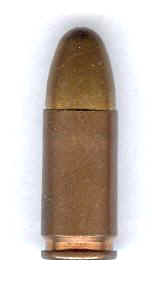
Proof Q mk Iz headstamp; RG 56 9mm QIZ
Blank:
No 9mm blank round was ever approved for service, but several blanks were used. The blanks were produced by Kynoch or purchased in Canada.
Drill / dummy:
The first 9mm dummies were made of service cases, with the cap omitted.
Eearliest known headstamp of a 9mm dummy; R^L 41
The drill rounds are produced in several variations;
from left to right: D mk I, D mk II, D mk 2 reduced standard, inspection L1A1, Drill mk 2 (contract with Austria (HP))
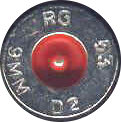
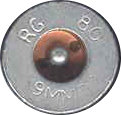
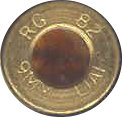
headstamps: RG 53 9mm D2, RG 80 9mmD2, RG 82 9mm L1A1, HP 86 9mm.D.2.
Boxes: